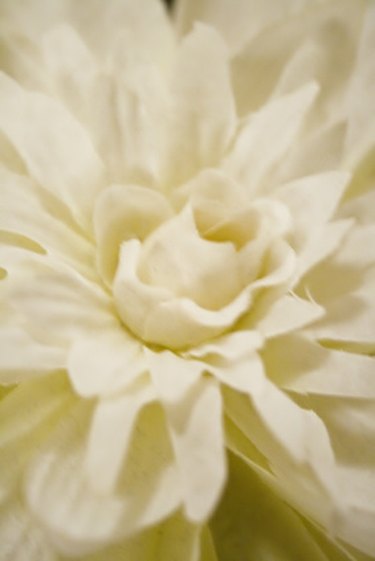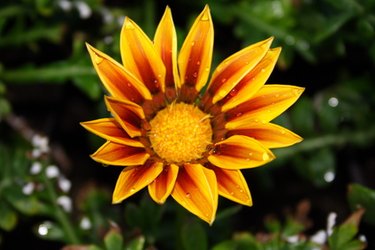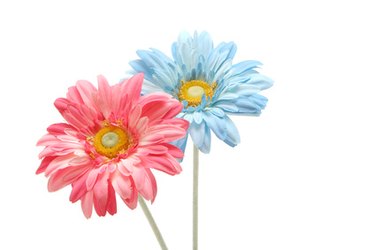
Finding the best annual flowers for a western exposure can be confusing. You need flowers that can take shade during the first part of the morning, but by afternoon, they need to survive the hot rays of the sun. Western exposures allow the flowers to absorb the moisture from the following evening and dew of the morning. They will need this to survive the hot afternoon glare of direct sunlight. Some flowers are perennials in warmer zones, but as you travel north in the United States, the same flowers are annuals.
Dahlias
Video of the Day

Depending on the variety, dahlias can grow from 1 to 5 feet tall. Dwarf dahlias are easy to grow from seed. The flowers are different depending on the variety you choose. There are 11 bloom categories, ranging from single to peony-flowered, formal or informal pompom, curved, straight or semi-cactus. They prefer soil that is high in organic matter and well-draining but moisture-retaining. The flowers are various colors, except blue. The blossoms are as small as 2 inches and can grow up to a foot in diameter. The blooming period begins in mid-summer and continues until the frost kills them. To keep them producing spectacular flowers, you need to deadhead and pinch them back.
Video of the Day
Gazania

Gazania rigens, gazania or treasure flower will survive in almost any type of soil. Even if the soil is poor and the conditions are like a drought, this daisy-like flower will still be beautiful. The blooms are white, pink, bronze, red, yellow and orange. The blooms close during the night and remain closed on cloudy days. It flowers from mid-summer until the frost. Although in zones 9 through 11, the gazania is considered to be a perennial, everywhere else it is an annual. They grow to a foot in height and grow well in containers, beds and borders. They attract butterflies.
Gerbera Daisy

Gerbera daisy has blossoms in a variety of colors. They grow almost a foot tall and are often seen in cut-flower arrangements. The gerbera daisy attracts bees, butterflies and birds. They prefer to grow in soil that is rich in organic matter. They need a well-drained soil that stays moist.
Portulaca
Portulaca, purslane, pusley, sun plant, verdolaga or moss rose is a native plant from Brazil. This is a trailing plant with 4- to 5-inch stems and spread to about 14 inches. The leaves are bright green and cylindrical, and they look thick, soft and juicy. Portulaca is often used as ground cover. They do well in hot areas and have a high drought tolerance. They have pink, red, yellow, white or orange blossoms, about an inch across. They can be single or double flowers resembling a wild rose. Some flowers are striped or spotted, and open on sunny days. But at night or on cloudy days, they remain closed.